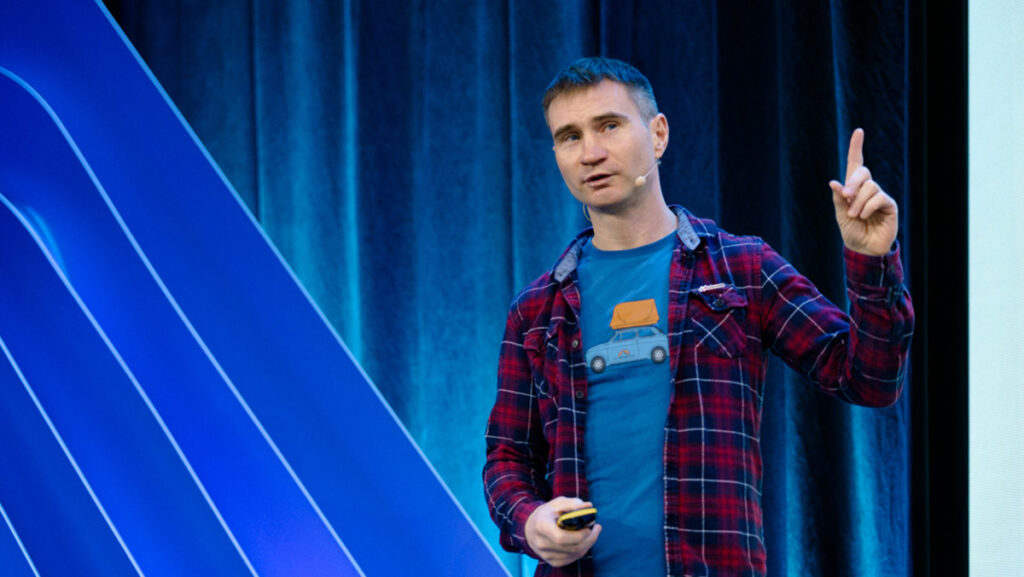AI is the future of Telematics, Gurtam CEO Aliaksei Shchurko said in a keynote on the first day (6th December) of Telematics Vilnius 2023. Shchurko’s speech to the packed auditorium commenced what is a two-day event aimed at the company’s partners and parties interested in Telematics and IoT.
Gurtam, founded in 2002, is a software company in GPS tracking and fleet management. Its subdivision, Wialon fleet management platform, combines GPS and IoT technologies to offer real-time tracking and management of vehicles and assets. Gathering data from various sensors and devices in vehicles, like GPS trackers and fuel sensors, the Wialon platform gives users insights on things like route optimisation, fuel monitoring, and even driver alertness.
Shchurko started his talk by stating he made a number of predictions about the Telematics sector at last year’s event in Lithuania. War and inflation not withstanding, Shchurko said his prediction that the sector would grow came true, with one report stating the growth of the global vehicle telematics market from 2022 to 2023 is projected to be from $72.85 billion to $85.36 billion.
Looking ahead for this year, the CEO outlined again what is his prediction of the industry moving forward. Although there are many emerging technologies in the field of automotive – a sector which accounts for over 75% of Wialon’s asset management – Shchurko said that these, be it EVs or even autonomous cars, will not drastically change the landscape for the company. But one that has been at the forefront of this year’s ‘hype’ could effect telematic as deep as many industries: AI.
“Let me tell you how AI will change telematics,” Shchurko said.
The industry broadly can stand to be affected through things like predictive analysis. In fleet management, this could see a particular group of cars that operate a specific route within a wider fleet being flagged for maintenance before the annual reminder for the fleet as a whole due to the analysis recognising the added pressure this route puts on the vehicles.
Classification, Shchurko stated, where the AI can see patterns between seemingly unrelated vehicles within fleets and group them together based on those attributes. That could be through things like petrol consumption, or route speed etc and all can lend to further insights.
Another was computer vision, where Shchurko pulled up an example of a GPS tracker gone wrong, mistakenly thinking an idling vehicle was moving around the area. New AI will be able to analyse visuals like a human and extrapolate what went wrong based on additional data.
Shchurko then told how it was not just to the back end AI would be applied, but to the UI and customer experience. Showing an example of ChatGPT, which Shchurko explained was limited, Wialon has taken steps to implement their own version for its customers. Like ChatGPT but with a higher preset of added context on telematics, customers can ask specific questions about installation, maintenance, or operational efficacy. This could even, at some point, Shchurko explains, extend to images, where customers send in an image of their issue and the AI can diagnose it.
Yet, to do all of this, what is required is the data to train the models. “The companies without big data won’t be able to do anything,” said Shchurko. Gurtam has upwards of 3.5 million connected products in the field.
Statista report that by 2025, there will be over 400 million connected cars in operation, including not only passenger cars but a wide range of commercial vehicles equipped with advanced telematics systems. Gurtam is hoping that their forward approach to things like AI can help them keep pace with the growth and make insights easier for those customers seeking to gain insights from the data.
There’s plenty of other editorial on our sister site, Electronic Specifier! Or you can always join in the conversation by commenting below or visiting our LinkedIn page.
